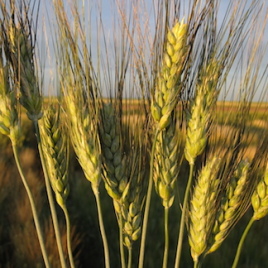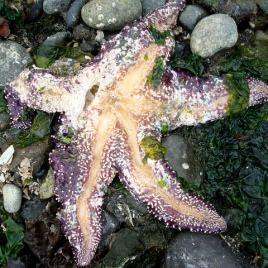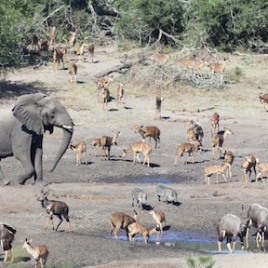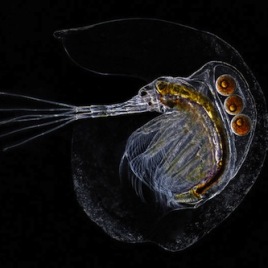D’étranges organismes recouverts de gélatine envahissent de plus en plus de lacs au Canada. Les chercheurs expliquent ce phénomène par la faible concentration de calcium dans les lacs, ce qui provoque de l’ostéoporose aquatique. Les auteurs montrent que l’effet persiste et est répandu après avoir fait un suivi de 36 lacs en Ontario et […]
Self-harm on the rise among girls in Canada
New statistics about hospitalizations due to intentional injuries in children and youth aged 10 to 17 – including both assault and self-harm – show that self-inflicted injuries have risen significantly in the last five years, especially among girls: Over the past 5 years, the rate of intentional self-harm–related hospitalizations in girls has increased by more than […]

Rendre la culture de blé carbone neutre
Améliorer les pratiques de récolte du blé pourrait réduire l’empreinte carbone de sa production. Une nouvelle étude montre que de réduire la fréquence des jachères tout en incluant la culture de légumes telles les lentilles dans la rotation des cultures pourrait augmenter la production de blé tout en réduisant l’émission de gaz à effet de […]

Towards carbon neutral wheat production
Improved practices in the farming of wheat could lead to a significant reduction in its carbon footprint according to a new study. With the changes suggested by the researchers, the carbon footprint of wheat could potentially be lowered to the extent that it removes more carbon dioxide from the atmosphere than is emitted during production. The […]

Les souvenirs enfouis d’une langue oubliée
Une nouvelle étude montre que notre cerveau réagit quand nous entendons une langue que nous avons déjà connue, mais que nous ne comprenons plus. À l’aide d’imagerie par résonance magnétique fonctionnelle, des chercheurs ont étudié les cerveaux de trois groupes d’enfants : des enfants unilingues francophones, des enfants bilingues français-chinois, et des enfants qui ont […]

Mapping unconcious memories of a lost language
A new study shows that our brains light up when we hear a language we once knew, even if we no longer understand it. The study used functional magnetic resonance imaging (fMRI) to study the brains of three groups of children: those who spoke only French, those who were bilingual in French and Chinese, and […]
Comment le ZMapp fonctionne
Une nouvelle étude met en lumière les mécanismes biochimiques qui expliquent l’efficacité du cocktail d’anticorps monoclonaux ZMapp, un traitement expérimental prometteur contre les infections causées par le virus Ebola développé entre autres par l’Agence de santé publique du Canada. À l’aide d’un microscope électronique, des chercheurs ont déterminé la structure de chaque anticorps monoclonal contenu […]
How ZMapp fights Ebola
A new study highlights the biochemical mechanisms behind ZMapp, a promising experimental treatment against Ebola virus infection developed with the involvement of the Public Health Agency of Canada. Using single-particle electron microscopy, researchers determined the structures of each monoclonal antibody in the Zmapp cocktail and how each one binds to vulnerable sites on the Ebola […]

Virus could be the cause of sea star die-offs
Researchers announced they have found a virus that may be the cause of a mysterious disease that infects dozens of sea star species along the Pacific coast between Alaska and Mexico, including off the coast of Vancouver since 2013. A study shows that sea star wasting disease (SSWD) could be caused by a very small virus (∼25 nm) […]

Un virus pourrait être la cause de la mortalité massive des étoiles de mer
Des chercheurs annoncent avoir découvert un virus qui pourrait être responsable de la maladie mystérieuse qui infecte depuis 2013 des dizaines d’espèces d’étoiles de mer sur la côte Pacifique entre l’Alaska et le Mexique. Une nouvelle étude montre que le syndrome du dépérissement de l’étoile de mer serait causé par un tout petit virus (∼25 […]
Un baiser transfère 80 millions de bactéries
Une nouvelle étude montre qu’un baiser de 10 secondes transfère en moyenne 80 millions de bactéries entre les deux partenaires. Cela peut sembler énorme, mais l’étude montre qu’un seul baiser ne change pas vraiment les communautés bactériennes vivant dans la bouche de chaque personne. Toutefois, si le couple s’embrasse à plusieurs reprises, l’étude montre que […]
Kissing transfers 80 million bacteria
A new study shows that a kiss lasting only ten seconds can transfer an average of 80 million bacteria between partners. That may sound like a lot, but the study goes on to show that a single kiss doesn’t noticeably change the similarity of the bacterial community in the mouths of two partners. However, repeated kisses […]

International collaboration needed to protect endangered species
A new study uses models to show that international collaboration is critically needed to prevent catastrophic habitat loss for some of the world’s most threatened species. The authors analyzed the distribution of almost 25,000 threatened species across the world and found that expanding the global protected area network to cover 17% of the world’s land […]
Key bird habitats under siege
Over 350 of the world’s Important Bird and Biodiversity Areas (IBAs) are under threat, according to a new report. In 2012 protection was suspended in the Bay of Panama wetlands, one of the most important sites for migratory waterbirds in the Americas. Closer to home, British Columbia’s Boundary Bay – Roberts Bank – Sturgeon Bank […]
Does ecology influence religion?
A new study suggests that environmental factors, alongside social and cultural factors, may play a strong role in determining the type of religion associated with a particular society. Researchers analysed 583 societies around the world to determine the role played by linguistic, historical, cultural and environmental factors in the dominant religion. In particular, they found […]

Genes and cat domestication
International scientists compared the full genome of a domestic cat, a female Abyssinian cat named Cinnamon, to the genome of other domestic cats and wild cat species and found that the genes of felines have evolved to help them live with us. Compared to their wild counterparts, domestic cats have changes in genes involved in […]

